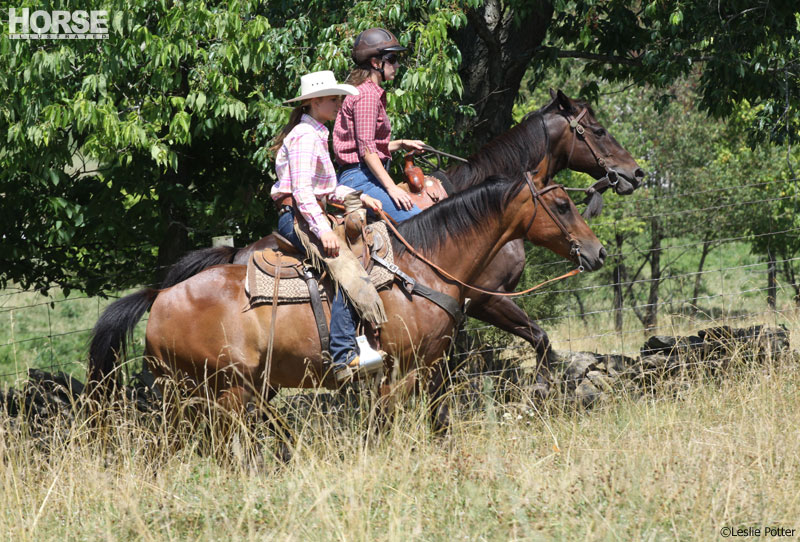

A: Your question mentions two important words: training and conditioning. To gain a better understanding of what may help our horses stay sound and remain competitive for as long as possible, it’s first necessary to define these different but related terms. I turned to one of my favorite resources of all time, Conditioning the Sport Horse by Dr. Hilary Clayton, published by Sport Horse Publications in Canada.
Training or schooling, according to Dr. Clayton, develops neuromuscular coordination and mental discipline. Examples of training include teaching your horse technical skills such as the mechanics of a simple or flying lead change, going forward or coming back in the canter in a line of fences, or sitting during a sliding stop in reining.
Conditioning or physical fitness, on the other hand, induces physiological and structural adaptations that have the dual benefits of maximizing performance and reducing the risk of injury. Because every discipline is different, the thing I really like about Dr. Clayton’s book is that she tailors programs for many different equine sports, from dressage to chuck wagon racing, no kidding!
Without knowing what you do with your horse, it’s hard to make a recommendation about whether or not adding hill work to your program will be beneficial. What specifically are you trying to accomplish? Move your mare up a level for which she needs increased fitness? Return her to full work following an injury or time off? Help her compensate for a weakness or condition?
There’s another wonderful book by Jean-Marie Denoix and Jean-Pierre Pailloux called Physical Therapy and Massage for the Horse by Trafalgar Square Publishing out of Vermont. It contains gems like “Exercise on a sloping plane” which describes the effort associated with descent and ascent, in conjunction with cavaletti, that is especially helpful for horses with weak backs, poor muscular strength, and propulsion difficulties. On page 15 is an illustration of a “Sensory Re-education Path” used to rehabilitate the neuromuscular system and recover coordination by walking the horse over different types and depths of surfaces such as sand, pebbles, asphalt, water, etc.
My point is that hill work, cavaletti, and work over varied terrain all have specific benefits to horses and can be utilized for increased performance or successful rehabilitation but need to be added gradually and thoughtfully to your existing program.
Get more training and conditioning advice from Dr. Gray:
Ask the Vet: Turnout Time vs. Exercise
Exercise for Managing a Horse’s Weight
More on hill work for conditioning:
Conditioning Horses with Hill Work
Hill Work for the Western Performance Horse
Throughout 2014, Dr. Lydia Gray will be answering your horse-health questions at horseillustrated.com/AskTheVet. Got a question for Dr. Gray? Send it to hc-editor@i5publishing.com and use subject line “Ask the Vet.”





